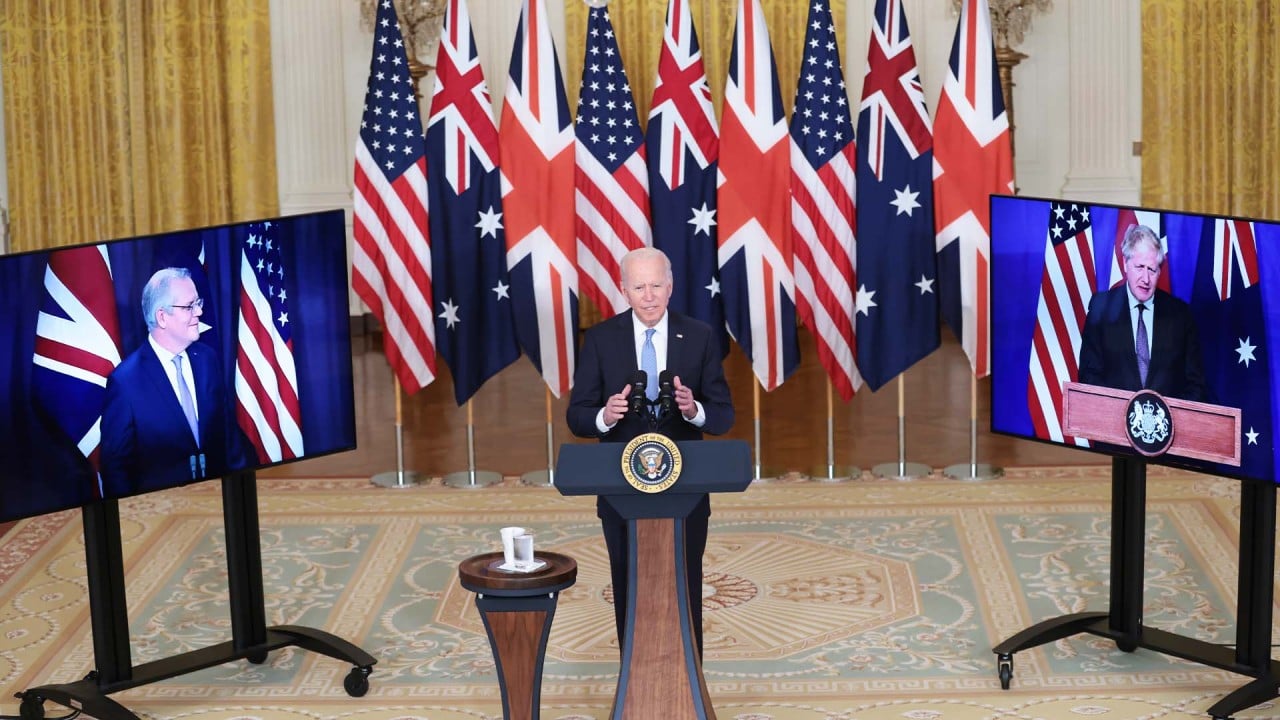
China’s bid to join Pacific Rim trade pact heaps pressure on US to step up regional economic strategy
- China has cited its commitment to regional integration as being behind its application to join the 11-member trade deal
- Analysts say the move gives Beijing some geopolitical leverage and highlights ‘America’s lack of a trade strategy’ in the Asia-Pacific
On Friday, Beijing said it had signalled nearly a year ago its eagerness to join the Comprehensive and Progressive Agreement for Trans-Pacific Partnership (CPTPP) – which was abandoned by the US – and had over the past year undertaken steps to advance its application, including talking to a number of the alliance’s 11 member nations.
“What I want to emphasise is that China is a firm advocate of trade liberalisation and a participant in cooperation and economic integration in the Asia-Pacific region,” Foreign Ministry spokesman Zhao Lijian said at a press conference on Friday. “China’s official application to join CPTPP once again shows China’s firm determination to expand opening up and promote regional economic cooperation.
“While these two issues [CPTPP and “Aukus”] have been conflated, everyone can see that China is promoting economic cooperation while the US, Britain and Australia are promoting war and destruction.”
While most trade observers and analysts agree the timing was a coincidence, they said the move offered China some geopolitical leverage by juxtaposing its economic might against the militaristic alliance.
It also puts pressure on the US to develop its own Asia-Pacific trade strategy, which may mean joining the CPTPP or even forging a new deal that mirrors it, analysts said.

03:51
US, UK, Australia announce ‘historic’ military partnership in Pacific
“While China appreciates that it is likely to have to contend with steadily greater military and diplomatic counterbalancing in its backyard, it appears to be betting on its growing economic centrality to offset that trend,” analysts from political risk consultancy Eurasia Group said in a note.
“That it formally applied [on Thursday] to join the CPTPP suggests that it sees America’s lack of a trade strategy as perhaps the chief Achilles’ heel in Washington’s efforts to contest Beijing in and beyond the Indo-Pacific.”
Julien Chaisse, a trade professor and adviser at City University of Hong Kong, said while “Aukus” was not a driver of China’s CPTPP application, he saw a link between the two.
A closer economic relationship will not only make economic sense, but also renders military conflict less likely,
“While the US is adopting an approach that aims at containing China, China is showing increased interest in regionalism and multilateralism. I think that is what the Chinese government wants to show,” he said.
Ming Du, a professor in Chinese Law and the director of Centre for Chinese Law and Policy at Durham Law School, said the application would also test “how united current CPTPP members would be to block China’s joining when the US was absent”. However, he agreed the application was a long time coming.
“A closer economic relationship will not only make economic sense, but also renders military conflict less likely,” Du said.
China’s interests in maintaining multilateralism, alongside regional and bilateral trade agreements, also reflects Mao Zedong‘s strategy of “walking on two legs”, or to maintain simultaneous development in various areas, Du said, adding the CPTPP application meets China’s long-standing domestic goals.
In essence, the application caps off China’s endeavours to reform its economy to meet the CPTPP’s stiff membership rules and, in turn, rationalises more reform for the economy, said Henry Gao, associate professor of law at Singapore Management University.
Chen Zilei, professor of Shanghai University of International Business and Economics, also said the application could push China to quicken the pace of its economic opening up.
“China needs to step up pressure tests in the pilot free-trade zones and try to align CPTPP standards with greater reforms,” Chen said, adding that reform measures in state-owned enterprises, labour and intellectual property rights should also be expedited.
China’s bid to join the pact will heap pressure on the US, which has not put forward a new Asia-Pacific strategy since the Obama administration’s policy fell through, Chaisse said.
“If I were to advice US, I think there is no better choice than to join CPTPP as soon as possible. It won’t solve everything but will certainly be a possible move. “I think time is ticking and it does not play in favour of the US. For now, each new US move causes anger among allies.”

03:29
RCEP: 15 Asia-Pacific countries sign world’s largest free-trade deal
The question, then, lies in whether current member countries have the capacity to stomach more trade deals, he added.
Shumi Akhtar, associate professor at the University of Sydney Business School, who made a submission to an inquiry in Australia about new members to the CPTPP, doubted the US would feel pressured to come up with a new trade strategy for Asia-Pacific. Washington would consider at length any deal to protect its sovereignty and national security, not just to counter another country‘s trade moves.
If China enters the CPTPP, the deal would help the country to expand its economy opening up doors to new trade partners it did not have a relationship with in other trade deals such as RCEP.
Additional reporting by Catherine Wong


